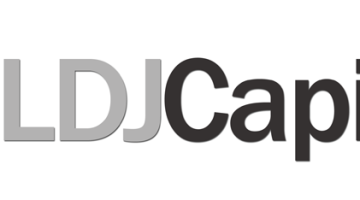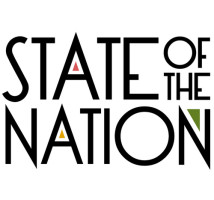Alternative finance, a concept which encompasses peer-to-peer lending and crowdfunding, has experienced rapid growth globally. It started in 2008, after the global financial crisis, as an online extension of conventional financing through family and friends, then spread to include online communities of issuers and investors across the globe. This led to the democratization and globalization of capital raising processes. Several factors have contributed to the growth of alternative finance as we know it today. They include the emergence of Internet 2.0 which enables users to achieve greater online interactivity. The reduced bank lending, as well as low-interest rates experienced, after the 2008 crisis have also forced investors and issuers to explore other emerging, non-conventional investment and financing models. A report released by DealIndex dubbed “Democratising Finance” states that an environment characterised by low-interest rates will drive investors to alternative finance. Billions of dollars have already been successfully raised by companies and individuals online in the form of equity, debt and donations.
Disruptive or Collaborative?
 Disruptive or Collaborative
Disruptive or Collaborative
In the past few years, a lot has been said about the potentials of alternative finance to disrupt the conventional finance industry. Part of its disruptive ability lies in subverting the already established loan processes in banks through peer-to-peer lending. Will this be the case? Will it also disrupt the conventional early stage investing industry?
However, the alternative finance market appears to be moving to the opposite direction. Instead of alternative finance trying to replace bank loans and venture capital, there is an emerging collaborative model where digital platforms are working alongside conventional investors.
Several developments in the industry are pointing to this direction. First, there is an increasing number of investor platforms where the individual investors follow an accredited investor. This shows how alternative financing and traditional financing work together in harmony. Second, the presence of secondary markets for shares in private companies is paving the way for institutions to engage in the space. Media sources such as the Financial Times say that conventional businesses that are regulated like mutual funds have started investing in private companies like Pinterest and Uber. Third, big institutions are also beginning to make use of peer-to-peer lending. For instance, the MetroBank in the UK announced that it would begin lending customer deposits via Zopa, a peer-to-peer platform. Goldman Sachs, an institution that is widely viewed as a pinnacle of conventional investment banking, announced that it will start lending via a consumer-driven, digital platform.
According to Kevin Johnson, manager of Innotribe Startup Challenge, the recent product of Innotribe startups is more about collaborating with, and not necessarily disrupting, banks. Unlike FinTech 1.0 that was all about disruption, he said FinTech 2.0 is a bank software build-in.
Alternative Finance Statistics
 Alternative Finance Statistics
Alternative Finance Statistics
Internationally, it is estimated that about 16.2 billion dollars was raised through crowdfunding, which is an alternative finance in 2014, a figure that is more than twice the 6.4 billion dollars raised in 2013. By the close of 2015, it is expected that about 34.4 billion dollars will have been raised through peer-to-peer lending and crowdfunding. If these forecasts are achieved by the end of 2015, then the alternative finance sector will have surpassed the 30 billion dollars annual funding average that is raised through venture capital. The success of alternative finance has led to the growing digital investing environment with information providers, investors, issuers, marketplaces and funding platforms that challenge conventional players. Though the alternative finance environment is largely dominated by developed countries, geographically, and is estimated to constitute 96 percent of the crowdfunding market’s financial return, not a single region can be said to control the digital investing space since it operates in a global capsule.
Factors Driving Alternative Finance Growth
 Factors Driving Alternative Finance Growth
Factors Driving Alternative Finance Growth
Several factors are accelerating the growth of alternative finance. The easing of regulations in many parts of the globe is enabling numerous investors to make private investments. In 2013, legislative changes in the US allowed companies to publicly state their plans to raise funds and this opened up the market to accredited investors. Recently, regulators took it a step further by allowing non-accredited investors access to asset classes under Title IV of the Jumpstart Our Business Startups (JOBS) Act for the very first time. The changing investing behavior is also driving growth in the alternative finance industry. According to the Democratising Finance Report, the demographics of alternative finance users are changing. Millennials are 10x more likely to utilize peer-to-peer lending compared to boomers, with at least 14 percent of millennials already utilizing alternative non-bank financing.
Millennials have a preference for online and mobile solutions that are fast and offer seamless user interactions. They are attracted by the growing involvement and transparency that online financing platforms bring to the investment process. The growing innovation in the alternative finance industry has led to its rapid growth. For instance, crowdfunding started as a donation and rewards-based funding option and evolved to integrate peer-to-peer lending. Today, there are digital platforms in every sector, even as other online tools like data providers evolve to complement the growing sector. Alternative financing is also rapidly engaging the social market as investors benefit from incentives to market their campaigns on their social media platforms. This creates strong networks of both issuers and investors, which in turn makes it easy for the online platforms to get customers when compared with conventional approaches.
There is another upsurge that is rapidly making a mark in the industry – real estate crowdfunding. Look for the report in this sector at Times Realty News.
Despite the growth that alternative financing is experiencing, there is the need to revisit the regulatory environment, which remains fragmented. Regulation differs across varied geographic locations in terms of rule-making, clarity, maturity and relevance. Service providers, funding platforms and data are also fragmented, and until the regulatory door is opened widely enough to facilitate cross-border transactions, alternative financing will only be a shadow of what it can really become.
Note: This article originally appeared on Investor Intel with this link http://investorintel.com/market-analysis-intel/is-alternative-finance-disruptive-or-collaborative/ on October 18, 2015
Featured Image credit: VictoriaGlobal.co
David Drake is the Chairman of LDJ Capital, private equity advisory; Victoria Partners, a 110 family office network; Drake Hospitality Group; and The Soho Loft Media Group with divisions Victoria Global Communications, Times Impact Publications, and The Soho Loft Conferences. Reach him directly at [email protected].
This post was originally published on this site






